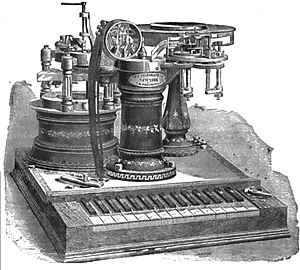Stepping stone to Internet privacy: the telegraph
By Kristopher A. Nelson
in
January 2011
400 words / 2 min.
Tweet
Share
There have been four pivotal technologies that have forced modern American law and society to re-examine its notions of privacy and confidentiality.
Please note that this post is from 2011. Evaluate with care and in light of later events.
There have been four pivotal technologies that have forced modern American law and society to re-examine its notions of privacy and confidentiality:
- a national postal system in the eighteenth century;
- the telegraph in the nineteenth century;
- telephony in the early-to-mid twentieth century;
- the Internet, including email, in the late twentieth and early twenty-first centuries.
I’m currently investigating the telegraph further to see how it fits into this progression (not necessarily to be confused with “progress”). When introduced as a technology in the nineteenth century, American law was still focused on property rights and the home as the place of privacy and confidentiality, and as the space to be protected from unreasonable searches and seizures. The postal system had begun to destabilize this view as early as the late eighteenth century, but the telegraph even more forcefully brought these concerns into American law and culture. Societal and legal changes around the telegraph foreshadowed the later debates about wiretapping and communications privacy that would forcefully emerge with the telephone and that would continue with the Internet.
In legal terms, the shift presaged by the telegraph highlights the slowly changing views of the Fourth Amendment (the prohibition against unreasonable searches and seizures) from one that revolved around property interests in the home to a view that the Fourth Amendment instead protected people, not places.
In addition to technology, of course, various other factors also played a role in the shift from a firm conception of the Constitution as protecting primarily property interests in the nineteenth century to a view focused on an underlying conception of protecting people from invasions of privacy by the mid-twentieth century. The rise of the middle class, as well changing labor and familial relations, are two key examples, but there are surely more.
But I think the four technologies I outlined above are four of the most key factors in this change. The telegraph is one of these keys, and its impact on communications and privacy law is under-appreciated, in my opinion.
Related articles
- Changing technology, changing expectations of privacy (inpropriapersona.com)
- Appeals Court Holds that Email Privacy Protected by Fourth Amendment (eff.org)

